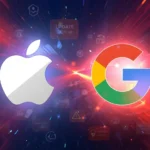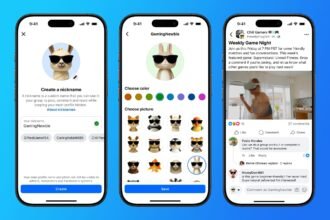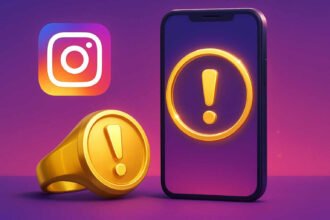Since Artificial Intelligence (AI) took over the globe, the trend of mass-produced and inauthentic content has increased rapidly on YouTube, the world’s leading video-sharing platform. YouTube has updated new monetization rules specifically to address this growing issue.
The streaming giant is implementing its new monetization rules starting from July 15, 2025. These changes require content creators to focus more on originality, creativity, and delivering valuable information to viewers.
The new monetization rules discourage the use of shortcuts such as copying existing content or repeatedly using the same formats. While YouTube has clarified that the updates are not specifically targeting reaction or clip channels, the platform is increasing enforcement against spam-like, repetitive, and low-effort content.
Changes in the YouTube monetization policy
In the 2025 YouTube policy update, the platform makes significant changes to the YouTube Partner Program (YPP). Identifying low quality content more strictly is the major change in this update. Instead of using “repetitious content”, the Google-owned platform used “inauthentic content” to restrict mass-produced videos and repetitive formats. These can be considered spam, even if they are not made by machines.
In a recent post on the YouTube Community forum, YouTube announced changes to its monetization rules and confirmed it will stop paying for ‘inauthentic content’.”
What is “inauthentic content”?
The purpose of content is directly linked to its authenticity. YouTube looks at more than just how you make a video. They check if your content gives viewers something valuable, like useful information, fun, or inspiration. If a video fails to provide meaningful value, YouTube may flag or remove monetization from the content under its updated guidelines.
YouTube defines inauthentic content as videos that are:
- Mass production of content using AI with no value and with very little or zero human effort.
- Highly repetitive content with the same format, scripts, or visuals.
- Spammy content that does not offer anything helpful to users.
Examples of Inauthentic Content:
- Auto-generated videos with robotic or AI voices and no personal touch.
- Repetitive uploads that use the same script, style, or visuals repeatedly.
- Copied videos from other creators with only minor changes, like music, cropping, or playback speed.
- Slideshow videos that rely on reused narration or text without any new insights.
- Clickbait or spam-like uploads that offer little relevant information and trick viewers into clicking.
- Reaction or commentary videos where creators add no meaningful input and just simply play another’s video.
- Faceless content that lacks originality, creativity, or a clear purpose.
- Superficially edited content, such as applying filters or trimming clips, without truly transforming the material.
The new changes in the YouTube Monetization policy are about strictly enforcing already existing rules. According to Rene Ritchie, head of editorial for YouTube, said that YouTube has always been against mass production and repetitive content. Moreover, he explained that this small update to the existing rules is not penalizing reaction or faceless channels but emphasizing the posting of original content.
Why is YouTube updating its monetization policy?
YouTube updates new monetization rules to promote quality content that restrict low quality content from spreading. With this update, the digital video platform encourages users to post a video with a clear purpose, not just for getting views.
Moreover, YouTube wants to maintain the trust of its advertisers. They want to display their ads with high quality and genuine content. YouTube’s new updates and monetization rules bring more clarity and protect good creators. As a result, the platform is good for everyone.
How does AI content fit into these rules?
YouTube updates new monetization rules do not restrict content creators to get assistance from AI tools. The new update emphasizes adding value and creativity by applying new ideas, thoughts, and opinions using storytelling techniques.
Content creators must follow the guidelines to monetize their channel. Moreover, it is important to tell viewers about AI-generated or fake parts within the content.
New rules reshaping content creation strategies
Now YouTube content creators must refine their strategies to keep earning from their YouTube channel. The new updates demand that creators avoid shortcuts and spammy uploads. Above all, they must create content for their audience, not just for algorithms.
Content creators must focus on the following key strategies:
- Craft and deliver their original ideas.
- Add value by sharing information, explaining a topic, or narrating a story.
- Get assistance from AI tools. Do not blindly rely on them.
- Make quick fixes in the older videos which are repetitive or lazy.
Content must reflect the real efforts of content creators and must make direct interaction with the audience. Your sense of perceiving something and explaining that in your way is your creativity. When adhering to YouTube policies, you are free to express and share your ideas. YouTube’s updated monetization policies will continue supporting and promoting your real efforts.
Are faceless channels at risk under YouTube’s new rules?
No. YouTube is not banning faceless channels under the new monetization rules. But the “inauthentic content” that feels spammy or copied is at risk. The following types of faceless channels are considered safe:
- Teach, explain, or entertain their audience in a creative way.
- Offer meaningful thoughts on a specific subject.
- Use AI but by adding human input like voice or explanation.
Unprotected faceless channel categories
- YouTube channels with no unique voice or personality.
- Music or videos using unoriginal tracks.
- AI-generated content without human input.
- Videos that read Reddit posts using robot voices and random pictures.
- Creators that reuse their content after making minor changes such as changing colors or applying basic filters.
Consequences for low-effort and AI-generated content
YouTube rewards creators who produce original and authentic content, while penalizing those who rely on shortcuts or repeatedly upload low-effort, repetitive material. The content creators who do not follow the new monetization rules may face the following consequences:
- Stop earning money from YouTube.
- Removal of channel from YPP.
- Old videos may be deleted.
Real creators will thrive
Explore new information and share that with your audience on YouTube. Build your narrative and raise questions on a subject from different perspectives. Show the world what it must witness. YouTube is your platform, where you can avail all opportunities to thrive as a content creator. Showcase your talent here, whether you are an entertainer, teacher, reviewer, or analyst. You can use AI tools to assist with your work, but not to replace your personal effort or creative contribution.
Stay connected with Tech Detour to get the latest updates on YouTube monetization policies and get assistance in making smart content strategies. We provide expert insights and practical career guides to empower your tech journey.




















